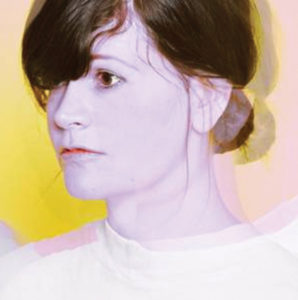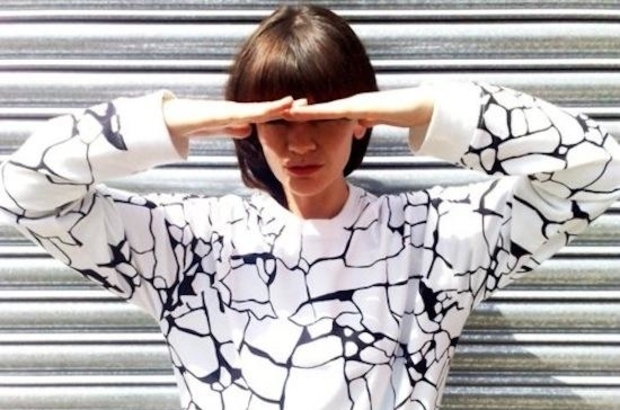SAM PRYCE interviews Nik Colk Void, one half of techno outfit Factory Floor, on her new electroacoustic piece and how it came about, and discusses spontaneity, synths and starting work on her own solo album.
Nik Colk Void is probably best known as one half of post-industrial techno outfit Factory Floor. Hypnotic, abrasive and uncompromising, the duo have released two critically-acclaimed LPs to date, and earned a reputation as one of the loudest live acts around. In her solo work, she’s collaborated with two visionary figures in industrial and electronic music — Throbbing Gristle’s Chris Carter and Cosey Fanni Tutti, as Carter Tutti Void — and has worked with Helena Hauff, Daniel Avery and The Charlatans.
At the Spitalfields Music Festival this week, however, her unique brand of experimental electronica collides with classical music as she premieres a new composition with orchestral collective S T A R G A Z E.
Tell us about your new composition for the Spitalfields Music Festival, and what first attracted you to composing electroacoustic music.
So I get a DM on twitter from André [de Ridder, the curator of the festival] to ask if I would be interested in working with him on a piece for Spitalfields Music Festival with his collective S T A R G A Z E, and I was immediately hooked! One, I have never worked with an orchestra before. Two, I saw this as an opportunity to write a piece reflecting the transitions, the excitements and the meeting of people and events that I experienced while I was living in East London. That time was life changing to me and shaped my career as a musician and artist, so it’s nice to give something back and perform this at Shoreditch Church where I performed my very first Factory Floor show.

You began as a guitarist and vocalist before moving into electronic music. How is working with synths and electronics different to working with more traditional instruments like the guitar?
Guitar was my first instrument because of the influence of the music I was listening to at the time at school, and singing wasn’t a pre-planned thing — it was a case of ‘someone has to do it’ with my first group. So it all started with me using the voice as a sound tool, almost like another instrument. I felt the pressure of being female in a group so I toned down the way I looked and I tried to play my guitar like a boy which became very confusing to me, until I had this realisation: I needed to rethink and invent my own language like I had with my voice. I had to approach my guitar playing in a similar way by using extended techniques, putting it on a table and connecting it with electronics, sampling it, hanging it from the ceiling and recording it — that sort of thing, so it became a more investigative approach rather than trying to replicate others. I moved to modular synthesiser and eurorack for many reasons. Firstly, in Factory Floor, because our albums were increasingly becoming more dance-based, but also because of the randomness of this instrument, and how you can mould and sculpt the sound into something almost non-identifiable to where your starting point is; a great tool for improvisation.
Spontaneity and improvisation seem to be really important parts of your creative process. Are there any other methods or stages you went through when working on this piece?
The pieces started off like a jam in my studio which is normal, but handing this over after a few edits to someone else to then work further is new to me, as I usually work within the here and now with the other collaborators in the room. So with this in mind, I introduced minimal beats and sounds that could act as indicators and signals to identify the steps throughout the piece and imagine the space the instruments would need and how they could work. I used midi instruments on the first section to map out how they could work, just to give me a sense of how I might reimagine the pieces. I kept in contact with André via Skype, so I was developing the piece through conversation, which then made the ideas grow and turn different corners.
How would you describe the crossover of classical music and electronic music? How is a dance/techno track different to a classical piece?
With dance and techno it’s all about blocks, bars, grids etc. With instruments I am discovering now it’s more like a weave of sound with the six instruments combined, and how they work together. It’s sonically very different — subtle and beautiful as well as powerful.

What artists, musical or otherwise, working right now are capturing your interest?
I just received Lorenzo Senni’s LP just released on Warp which is pretty genius: he has used the late 90s/00s superstar of electronics Roland JCM 800 and reinvented his own language — the voyeur of rave dance music. Next week I’m starting a residency at the Zabludowicz Collection in Chalk Farm in response to Haroon Mirza’s work. I have collaborated with him in the past as his visual art and sculptural installations generate audio compositions, occasionally with a nod to club and dance music, so this is where I come in. I’m very excited to be working within a gallery space again.
What’s next for you? Is there more Factory Floor or Carter Tutti Void in the pipeline? Or do you want to embark on more solo projects?
I have recently collaborated with Peter Rehberg, the founder of the Viennese independent label Editions Mego. We both set up our modulars and improvised and the results are, I have to say, very exciting. The project is called NPVR and the LP 33 33 is coming out early next year. I have also been working with Swedish sound artist Klara Lewis; we have performed for BBC Radio 3 at Cafe Oto and we hope to pick up this project in January. I also have more work coming with Carter Tutti Void and yes, I am finally beginning work on a solo album, which is very exciting.
Renegade New Classical is at Shoreditch Church (St. Leonard’s) on 6 December, part of Spitalfields Music Festival which runs across East London until 10 December 2017. Get your tickets here: www.spitalfieldsmusic.org.uk
Featured image courtesy of hungertv.com





